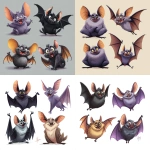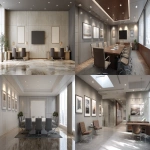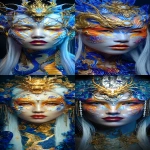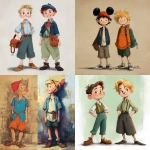Explore the Best AI Image Gallery

Beyond the Brush: Wearable Tech and the Future of Creative Expression
The intersection of technology and creativity has always been a fertile ground for innovation. Now, with the rise of wearable technology, this fusion is reaching new heights. Wearable devices are no longer just about tracking fitness or receiving notifications; they are becoming powerful tools that empower artists, designers, and creators to express themselves in unprecedented ways.
Transforming Creative Processes
Wearables are revolutionizing the creative process itself. Imagine a painter who can control brushstrokes with hand gestures captured by sensors on a smart glove, or a musician who can compose melodies using their body movements detected by a haptic suit. These scenarios are becoming reality as wearable technology enables new forms of interaction and expression.
Augmented Reality: A Creative Playground
Augmented reality (AR) is another area where wearables are making a significant impact. AR overlays digital content onto the real world, creating immersive and interactive experiences. Imagine an architect using AR glasses to visualize their building designs in 3D or a sculptor who can use AR to add intricate details to their sculptures.
Applications Across Creative Disciplines
The potential applications of wearable technology in the creative industry are vast and diverse:
- Visual Arts: Smart gloves, haptic suits, and AR glasses empower artists to create interactive installations, explore new mediums, and enhance their traditional techniques.
- Music: Wearable sensors can capture a musicians body movements, translating them into musical notes or soundscapes. This opens up new possibilities for composing and performing music in innovative ways.
- Design: Designers can use wearables to visualize their creations in 3D, test prototypes virtually, and collaborate with colleagues remotely. AR glasses can also be used to showcase designs in real-world settings.
- Film & Animation: Wearable cameras and motion capture suits allow filmmakers to create more immersive and realistic experiences. Actors can wear sensors that track their movements, which are then translated into digital characters in animations or virtual reality scenes.
Ethical Considerations
As with any powerful technology, wearable tech raises ethical considerations that need to be addressed:
- Data Privacy: Wearables collect vast amounts of personal data. It is crucial to ensure that this data is used responsibly and ethically, with transparent policies and user consent.
- Bias & Representation: Algorithms used in wearables can perpetuate existing biases if not carefully designed and tested. It is important to ensure that creative tools powered by AI are inclusive and representative of diverse perspectives.
- Accessibility: Not everyone has equal access to wearable technology. It is important to consider the needs of users with disabilities and strive for inclusivity in design and implementation.
Future Trends
The future of wearable tech in the creative industry is brimming with possibilities:
- Increased Integration: Wearables will become increasingly integrated with other technologies, such as artificial intelligence (AI) and virtual reality (VR), creating even more immersive and interactive experiences.
- Personalized Creative Tools: AI-powered wearables will learn user preferences and offer personalized creative suggestions and tools, empowering individuals to express themselves in unique ways.
- Collaboration & Co-Creation: Wearables will facilitate real-time collaboration between artists and designers regardless of their location. Imagine a team of musicians collaborating on a piece using haptic suits to share their musical ideas.
Wearable technology is not simply about gadgets; it is about empowering creativity, fostering innovation, and blurring the lines between the physical and digital worlds. As this technology continues to evolve, we can expect even more groundbreaking applications that will redefine the creative landscape in ways we can only imagine.









](https://images.ai-img.art/thumbnails/150/2fbd98ecfc425cfc1597779121e1c0305437067779e9c471eb64ff9615d5be98.webp)




](https://images.ai-img.art/thumbnails/150/3020b8c2b6d9be07e042357107af1de10deb274a41d2b0f332684ad4b532a702.webp)



](https://images.ai-img.art/thumbnails/150/269414b0e541026702e9e67c67602c96162f37ff460a388b3b36314c8fc936dd.webp)













](https://images.ai-img.art/thumbnails/150/8d1fe5a7a49cfc96747182431a853357913286d89258383caab2d3b4681afcb5.webp)










](https://images.ai-img.art/thumbnails/150/5197af8969d850e2a43e141d41e482ccbceedebceb2a4caf9f098f943f9d1b0f.webp)




](https://images.ai-img.art/thumbnails/150/485c8b1c747827bdc9a962f8a1919b3c259b18dd263b260208a1eae19fb85e07.webp)
